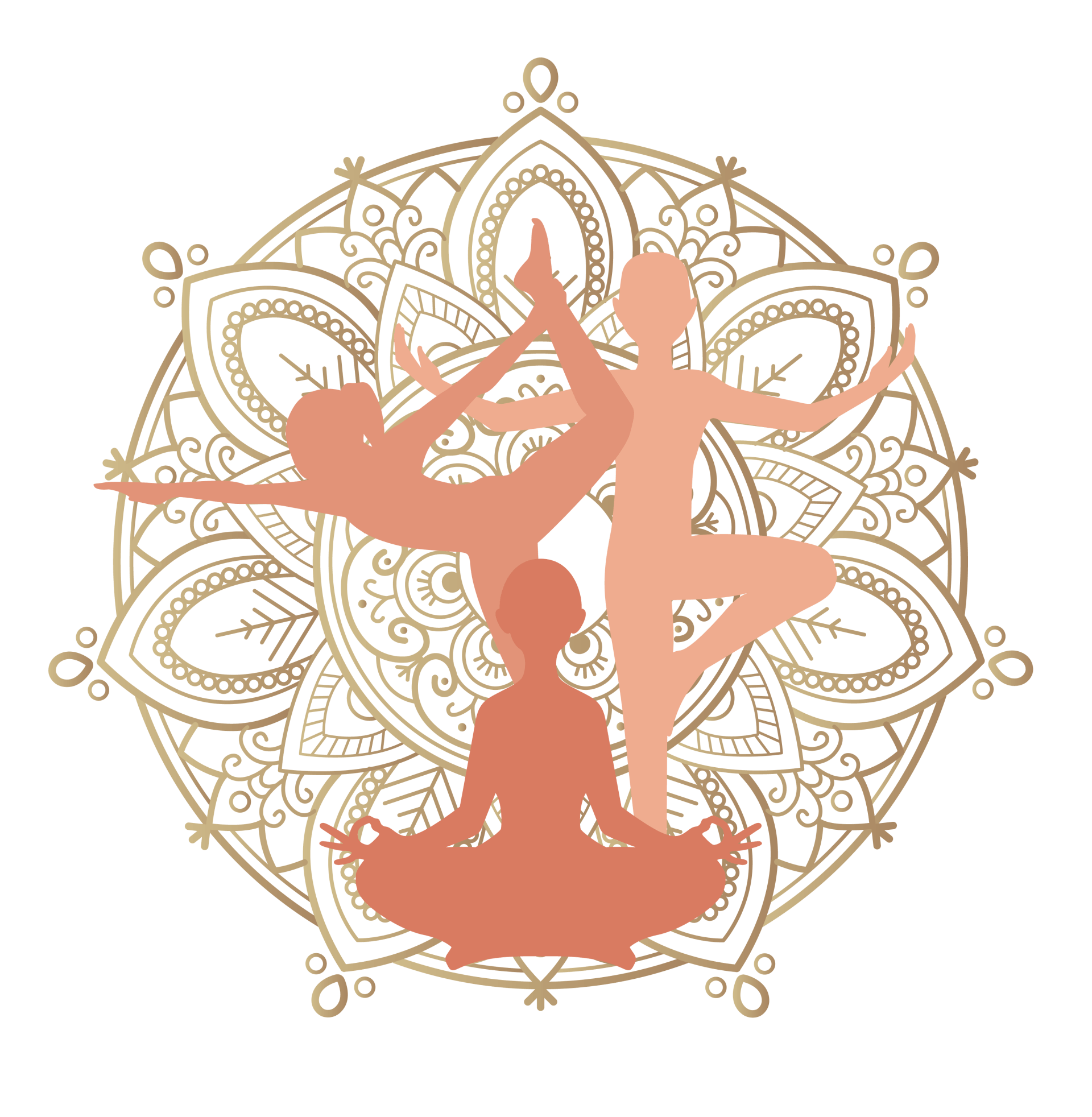Taking care of yourself also means taking care of your sleep
Elodie Abadie • 13 septembre 2023
Peaceful sleep thanks to yoga

Insomnia, restless nights, stress and fatigue are part of your daily life?
I have a 5-year-old daughter, so I go to bed quite early and it often takes me a good hour to get to sleep.
Why is that? I overthink!
About what? Current instability, countries at war, my business, my family..... All these factors affect my quality of sleep. It simply affects my mood and both my physical and intellectual capacities at the moment, but in the long run, consequences can be dangerous for my health (cardiovascular problems, high blood pressure....).
We spend around a third of our time sleeping. Sleep is essential and necessary, so it's important to understand how to manage it.
Yes, it's important to go to bed with happy, constructive thoughts, because the subconscious mind keeps repeating your last thoughts. If you worry while you sleep, you'll still feel tired when you wake up.
So for the past month, I've been doing a bedtime routine.
To rebalance my body after a busy day, I perform a series of yoga poses to relax and soothe my racing thoughts.
And I promise you, it's possible to get a good night's sleep thanks to yoga.
Yoga will help you release the accumulated stress of the day and promote relaxation.
Here's a plan to help you change your routine and regulate your sleep issues.
Would you like to have sweet dreams? Here's how.
1 => Before taking your shower, I invite you to perform this little yoga
dance choreography,
which will help you disconnect, let go and release all the tensions of the day. Click here to try it out.
The further along you get in the week, the more enjoyable it will be, as you'll know it by heart. The idea is to be able to practice it every evening with the music of your choice, the one that speaks to you, the one you like.
2 => Take a hot shower to relax your body. (Or a bath if you have a bathtub) If you have time, you can of course add candles, incense, essential oils ... I know that such an intense routine is complicated to implement on a daily basis, especially if you have husband and children waiting to have dinner. So a hot shower will do the trick. Use a scented, relaxing shower gel.
3 =>
Eat at the right times and the right things. Ideally at least 1h30 before bedtime. Avoid stimulants such as coffee, tea and rapid sugars (sweets, sweet desserts...).
Instead, choose pasta (not overcooked), rice, wholemeal bread, lentils and chickpeas ....
4 => Here's a little
meditation
that may also help you fall asleep.
The brain is the main troublemaker of your nights. It leads us to ruminate, carrying us away in thoughts that go round and round in our heads. It's important to re-center ourselves to calm these thoughts and focus our attention on present sensations.
Meditation for sleep, to be found on the studio in guided meditation audio format, click here.
Let's imagine that thoughts are like birds in the sky. Lie on your back. For a few minutes, feel the sensations of your body breathing, the air coming in and going out. Your muscles contracting and relaxing. Observe the flow of air through your lungs. As you breathe, bring your attention to the thoughts and emotions that are flowing through you at that moment. The images, words and sounds in your mind. Watch them appear and disappear. Thoughts are like birds in the sky, fluttering in the wind. Watch them transform. If you notice that your mind has flown away with a thought or rumination, quietly bring your attention back to your breath. Breathing is like the wind that blows the clouds away from your mind.
Understanding sleep:
Sleep is characterized by periods of :
- decreased motor activity
- increased sensory response thresholds
- easier memorization
- discontinuity of mental activity
In the brain, during slow-wave sleep, activity slows down more and more as sleep deepens.
The same applies to the body, with a progressive reduction in the body's main basic functions: pulse and breathing slow down, blood pressure, muscle tone and body temperature drop.
There are two types of sleep: slow wave and REM.
What happens to the body?
In slow-wave sleep, neuro-vegetative functions gradually slow down as sleep deepens and brain activity slows.
In REM sleep, muscle tone disappears completely.
The hypnogram shows the sequence of a night's sleep.
Why do we need sleep?
Sleep deprivation affects our ability to learn, memorize and adapt to new circumstances. It also plays a key role in daytime well-being.
Another function of sleep could be to put the body to rest, or at least reduce its energy consumption and rebuild metabolic energy stocks (glycogen in the liver). Other systems benefit from this "rest": cardiovascular systems, for instance.

You might think that alignment in yoga means placing your knee perfectly above your ankle, keeping your hips square, and your spine long and straight.
But what if it was so much more than that? In our culture of “doing things right,” alignment is often reduced to a technical cue — a matter of perfect lines and precision.
Yet in yoga, true alignment goes far beyond the body .
It extends into the breath, the energy, the emotions — and the way you connect to yourself. This article invites you to revisit this word we hear everywhere and rediscover its deeper meaning — on your mat and in your life.

What if we practiced yoga to return to simplicity?
Not to perform.
Not to master a thousand postures.
Not to impress.
But to come back to what truly matters: one breath, one presence, one body we truly listen to. Today, yoga is often seen as a performance discipline — associated with the image of the perfect body or the most advanced pose.
Yet, in its essence, yoga is a practice of awareness and unity .
It’s not about doing more, but about being more present. This article invites you to drop the masks, let go of the “shoulds,” and rediscover yoga as a path back to yourself — to slowness, to simplicity, and to truth.

What if your body had messages that your mind can’t put into words?
What if free movement was a doorway to everything you feel deeply but don’t dare to express? The body remembers.
The body speaks.
And sometimes, all it takes is letting it move differently so it can finally set itself free. In this article, let’s explore the emotional intelligence of the body, the blocks that manifest through physical tension, and the power of spontaneous movement to bring back breath, clarity, and inner peace.

What if your yoga mat became more than just a space for postures?
Imagine it as an inner playground, a sacred space where you can move differently, breathe deeply, and express yourself freely. Dancing your yoga is a unique practice that blends free movement, breath awareness, and spontaneous creativity.
It’s a yoga that both grounds and liberates.
A yoga that isn’t limited to “doing it right,” but one that invites you to feel, create, and vibrate. In this article, discover what it means to dance your yoga, the benefits of this practice, and how to integrate it into your daily life.
The fear of failure affects everyone, regardless of age, background, or life path. It often prevents us from taking action , seizing opportunities, or truly believing in ourselves. Combined with the fear of judgment from others, it can become paralyzing if we don’t learn how to understand and transform it. In this article, let’s explore why the fear of failure exists, what the signs are, what failure can teach us, and above all, how to overcome it to regain confidence, serenity, and motivation.
I n yoga practice, every posture (asana) and every breath carries a deeper meaning. But there is one tool that makes your practice even more powerful: setting an intention. More than a simple ritual, an intention acts like an inner compass. It guides your energy, directs your mind, and transforms your yoga session into a true experience of awareness and alignment. 👉 In this article, you’ll discover why setting an intention in yoga is essential , how to formulate it effectively, when to use it, and the benefits it can bring both to your practice and to your daily life.
Intuitive dance is attracting more and more people seeking well-being, creativity, and release. But what exactly is it? As its name suggests, it is a dance guided by intuition rather than an imposed choreography. Here, there are no rules, no codes, no aesthetics to respect. You move freely, in tune with your sensations, emotions, and breath. Intuitive dance is an invitation to reconnect with your body and your deeper self through spontaneous movements, without judgment or performance.

Talking about money is often delicate—especially when it comes to a spiritual and ancient practice like yoga. Many people associate yoga with inner peace, serenity, and the search for meaning, while seeing money as a purely material value opposed to this quest. But the reality is much more subtle: yoga and money are not incompatible. Practicing yoga often requires an investment: studio classes, workshops, retreats, teacher trainings, equipment (mats, props…). This raises an important question: why do we hesitate so much to invest in our well-being, when we spend much more easily on things that don’t necessarily bring lasting value to our lives? In this article, let’s explore the link between yoga and money , and why investing in your practice may be one of the best choices you can make.

I t is often said that we learn best by teaching others what we ourselves have understood.
Teaching, and especially teaching yoga, is a true vocation rooted in sharing. More and more yoga enthusiasts are taking the step to become teachers. But how do you start teaching yoga? What steps should you take, what skills are required, and what qualities are essential to transmit this ancient discipline? In this guide, we’ll explore the key points to becoming an inspiring, competent, and aligned yoga teacher.

In yoga, each breath is far more than an automatic body movement: it is a deep connection between body, mind, and vital energy.
The Sanskrit word Prana means both breath and life , reminding us that the breath is the very essence of our vitality. Did you know that you breathe between 20,000 and 30,000 times a day , most of the time unconsciously? In yoga, the breath becomes conscious, guided, and intentional—and that’s what transforms a simple physical practice into a true path of balance and well-being. In this article, let’s explore why breathing is so important in yoga, what specific breathing practices (pranayama) exist, and the many benefits it brings to both body and mind.
